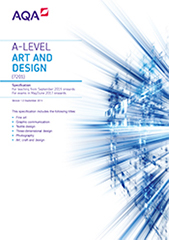3.2 Overarching knowledge, understanding and skills
Students should be introduced to a variety of experiences that employ a range of traditional and new media, processes and techniques appropriate to the chosen areas of study. Knowledge of art, craft and design should be developed through research, the development of ideas and making, working from first-hand experience and, where appropriate, secondary source materials.
Students are required to participate actively in their course of study, recognising and developing their own strengths in the subject and identifying and sustaining their own lines of enquiry.
Courses based on these specifications must require students to develop practical and theoretical knowledge and understanding of:
- relevant materials, processes, technologies and resources
- how ideas, feelings and meanings can be conveyed and interpreted in images and artefacts
- how images and artefacts relate to the time and place in which they were made and to their social and cultural contexts
- continuity and change in different genres, styles and traditions
- a working vocabulary and specialist terminology.
Courses based on these specifications must require students to develop the skills to:
- record experiences and observations, in a variety of ways using drawing or other appropriate visual forms; undertake research; and gather, select and organise visual and other appropriate information
- explore relevant resources; analyse, discuss and evaluate images, objects and artefacts; and make and record independent judgements
- use knowledge and understanding of the work of others to develop and extend thinking and inform own work
- generate and explore potential lines of enquiry using appropriate media and techniques
- apply knowledge and understanding in making images and artefacts; review and modify work; and plan and develop ideas in the light of their own and others’ evaluations
- organise, select and communicate ideas, solutions and responses, and present them in a range of visual, tactile and/or sensory forms.
Students can work entirely in digital media or entirely in non-digital media, or in a mixture of both, provided the aims and assessment objectives are met.
Please refer to Aims and assessment objectives.
